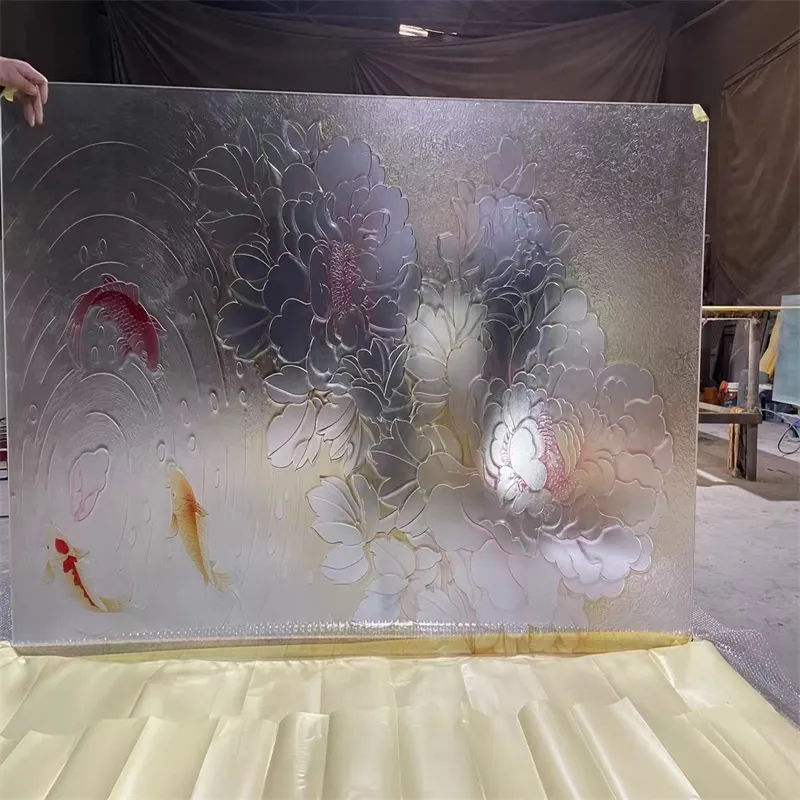Dec . 01, 2024 04:25 Back to list
laminated glass and tempered glass
Understanding Laminated Glass and Tempered Glass
In the world of architectural design and construction, glass plays a pivotal role not only as a functional element but also as a crucial aesthetic component. Among the various types of glass available, laminated glass and tempered glass stand out due to their unique properties and applications. Understanding these two types of glass helps architects, builders, and homeowners make informed choices regarding their projects.
Laminated Glass
Laminated glass consists of two or more layers of glass that are bonded together by an interlayer, typically made of polyvinyl butyral (PVB) or ethylene-vinyl acetate (EVA). This interlayer not only acts as an adhesive but also provides several significant benefits. One of the most critical advantages of laminated glass is its safety feature. If broken, the interlayer holds the glass pieces in place, preventing shattering and reducing the risk of injury from sharp shards. As a result, laminated glass is an excellent choice for applications in areas prone to storms or high winds.
Beyond safety, laminated glass also provides enhanced sound insulation. The interlayer absorbs sound vibrations, making it an ideal option for buildings located in noisy urban areas or near highways. Additionally, laminated glass offers UV protection; the interlayer blocks most of the sun's harmful ultraviolet rays, helping to protect furnishings and reduce fading.
Laminated glass is also customizable in terms of aesthetics. It can be produced in various thicknesses, colors, and textures, allowing for creative design options. Architects often use laminated glass for skylights, safety railings, and decorative elements in facades, balancing functionality with visual appeal.
Tempered Glass
laminated glass and tempered glass

Tempered glass, also known as toughened glass, undergoes a specialized heating and cooling process that increases its strength. During manufacturing, the glass is heated to over 600 degrees Celsius and then rapidly cooled. This process alters the glass structure, making it much tougher than regular glass. The resulting material is highly resistant to impact, thermal stress, and pressure.
One of the standout features of tempered glass is how it breaks; when it does break, it shatters into small, blunt pieces rather than sharp shards, significantly reducing the risk of injury. This characteristic makes tempered glass a preferred option for various applications, including shower doors, glass doors, and facades.
In addition to safety, tempered glass is favored for its ability to withstand heat and changes in temperature. This property makes it suitable for use in areas with high temperature fluctuations, such as in the construction of glass walls for buildings with significant sunlight exposure.
Applications and Conclusion
Both laminated glass and tempered glass have specific applications suited to their properties. Laminated glass is often used in safety-critical situations, such as in car windshields, glass floors, and windows in commercial buildings where safety and sound insulation are paramount. On the other hand, tempered glass is commonly found in places that require durability against impact and heat, like patio doors, facades, and bathroom enclosures.
In conclusion, understanding the differences and benefits of laminated glass and tempered glass is essential for making informed decisions in construction and design. Each type of glass offers unique advantages that cater to safety, durability, and aesthetics, making them invaluable materials in modern architecture. Whether opting for the sound insulation and safety features of laminated glass or the strength and thermal resistance of tempered glass, both contribute significantly to the functionality and beauty of our built environment.
-
Safety and Style with Premium Laminated Glass Solutions
NewsJun.24,2025
-
Reinvents Security with Premium Wired Glass
NewsJun.24,2025
-
Premium Float Glass Line for Modern Architecture
NewsJun.24,2025
-
Low Emissivity Glass for Energy-Efficient Architecture
NewsJun.24,2025
-
High-Performance Insulated Glass Solutions for Modern Architecture
NewsJun.24,2025
-
Elevates Interior Style with Premium Silver Mirror
NewsJun.24,2025
Related PRODUCTS














